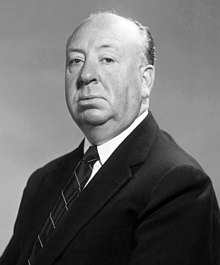Opening Sequence Analysis
THE BIRDS
The clip above is the opening sequence to 'THE BIRDS' by Alfred Hitchcock. I have chosen to analyse this particular opening because all though it does not show a lot of the conventions used in todays thriller openings it represents how far they have come and how some small, simple micro-elements of film can have a great effect on the target audience, even if only one or two elements are used. We are all able to observe the credits, rolling throughout this selected clip but we also observe the birds flying around in the background. This instantly makes us relate to the title of the film - 'THE BIRDS' - to the images on screen. Now all though birds do not usually come with negative connotations, the micro-element of sound comes into play to change our image of them and to mould their connotations. The non-diegetic sound played in the background sets and extremely eerie and sinister atmosphere. Now because of this, us the audience no longer rely on our own connotations that come to mind when we think of birds. We have allowed the micro-element of sound to mould our view of the creatures. The music has made them out to be mysterious, negative and maybe even dangerous creatures. These connotations would of never been brought up without the element of sound playing its part in this selected clip.
Alfred Hitchcock was a big fan of 'dragging things out' when it came to opening sequences, he loved a massive build up of suspense and anxiety, between characters and the audience, his methods were extremely effective when it came to building mystery and suspense. Hitchcock would often use the frist 30-40 minutes of a film to build the suspense between the characters, narrative and the audience. Many Hitchcock films did this, one of Hitchcock most famous films 'pyscho' gave Hitchcock his well earned title - "The master of suspense".
Alfred Hitchcock was a big fan of 'dragging things out' when it came to opening sequences, he loved a massive build up of suspense and anxiety, between characters and the audience, his methods were extremely effective when it came to building mystery and suspense. Hitchcock would often use the frist 30-40 minutes of a film to build the suspense between the characters, narrative and the audience. Many Hitchcock films did this, one of Hitchcock most famous films 'pyscho' gave Hitchcock his well earned title - "The master of suspense".




































